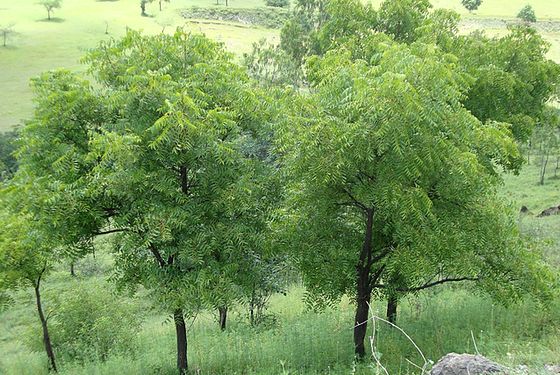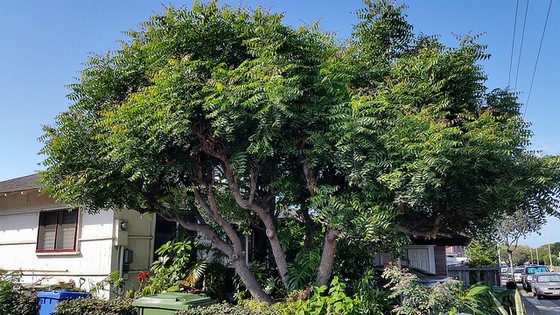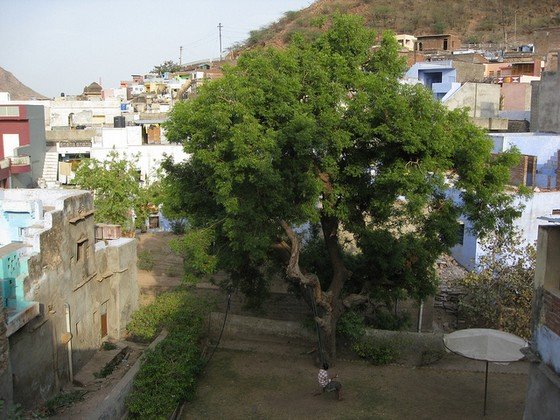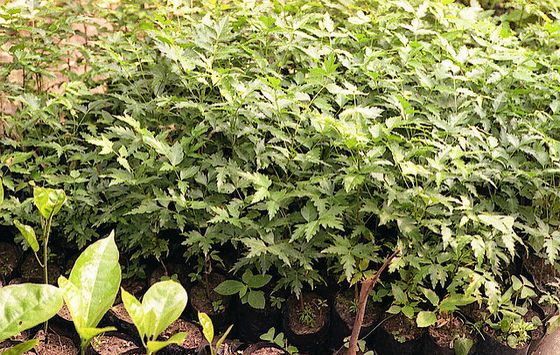Growing Neem Trees
How To Grow A Neem Tree - In The Right Conditions
And Climate Growing A Neem Plant Is Easy
Growing neem trees is not hard. The neem tree is very hardy and fast growing.
It tolerates a wide range of conditions and neem is growing in many countries and regions of the world.
 Neem trees growing in India, their country of origin. Photo: Vishvesh war
Neem trees growing in India, their country of origin. Photo: Vishvesh warToday you can find neem trees growing in Asia (of course, that's where they come from), in Africa, and in Central and South America. There are also some trial plantations in the United States and in Australia.
 Neem tree growing in Honululu. Photo: Wendy Cutler
Neem tree growing in Honululu. Photo: Wendy Cutler
Temperature Range
The neem tree originated in India and loves growing in a tropical to subtropical climate. It needs and positively thrives in hot weather, but it can handle the occasional cold spell.
Temperatures up to 50°C (120F) are fine for growing neem trees. So is the occasional drop down to about 5°C (35F). Below that the neem tree will shed its leaves. Longer exposure to cold weather can cause permanent damage or kill a neem tree. The younger the tree, the more vulnerable it is to cold weather.
(For readers from non-tropical and cooler climates: learn how to grow neem as a house plant.)
Sunlight
The more, the better. Especially young neem trees cannot handle shade.
Soil
Any. True, you can grow neem trees in just about any soil.
Clay soils or sandy soils, rocky or saline soils, it does not matter. Like most plants neem trees grow best in deep, rich, dark soils with lots of nutrients and good water holding capacity, but it is amazing to see how well neem trees grow on the poorest, shallowest, rocky slopes as well.
Neem trees don't care much about pH either. Up to 8.5 is fine, and so are acidic soils. In fact, growing neem trees can help bring acidic soils back to a neutral range and improve the water holding capacity and nutrient level of poor soils.
 Neem tree growing on a dry hillside in an Indian village. Photo: taylorandayumi
Neem tree growing on a dry hillside in an Indian village. Photo: taylorandayumi
Water
An ample supply of water is good when growing neem trees, but the tree can make do with very little.
The areas where neem trees grow naturally receive between 450 and 1200 mm of rain per year, but neem has been planted in drier regions as well. There are neem trees growing in areas that receive as little as 200 mm annual rain.
The one single thing that neem trees can't handle are soggy, waterlogged soils. The plant roots need to breathe, so don't try growing neem trees in swamps.
Propagation
 Growing neem tree seedlings in pots/polyethylene bags. Photo: Scamperdale
Growing neem tree seedlings in pots/polyethylene bags. Photo: Scamperdale
The most common propagation method is to grow neem trees from seed.
There have been trials using cuttings, suckers, roots and tissue culture, and it all works, but planting seed is by far the easiest and the most common method.
As long as the seed is fresh it germinates readily in about a week.
I have never tried to raise seeds in pots, I just put them straight into the ground and they do fine anywhere. However, I see no problem with raising them in pots. Any standard mix, supplemented with a balanced fertilizer, should do.
Neem trees develop a very deep and strong tap root. Leaving them in pots or polythene bags for too long will lead to stunted and distorted roots, and it is also very easy to damage roots when the tree is planted out. So if you start them in pots, get them out in the ground as soon as possible.
Growth And Life Span
Neem trees grow slowly during their first year, but they reach maturity fast. You can expect to harvest your first neem fruit after three to five years. It takes about ten years for a neem tree to get to full production. After that it will produce 30 to 50 kg of fruit a year. A neem tree can be expected to live 150 to 200 years.
How to grow neem as a house plant.
Making neem tree home remedies.
Read about the neem tree's many uses and benefits.